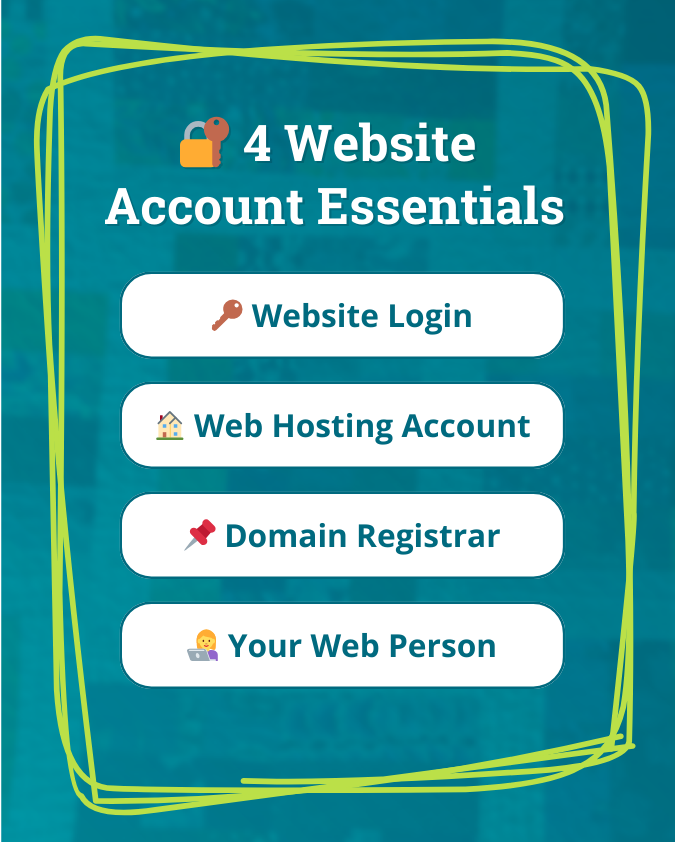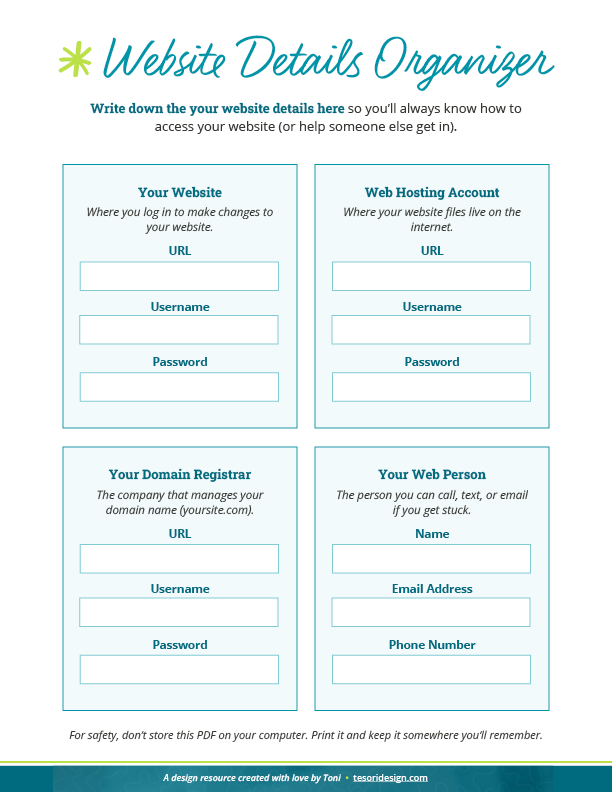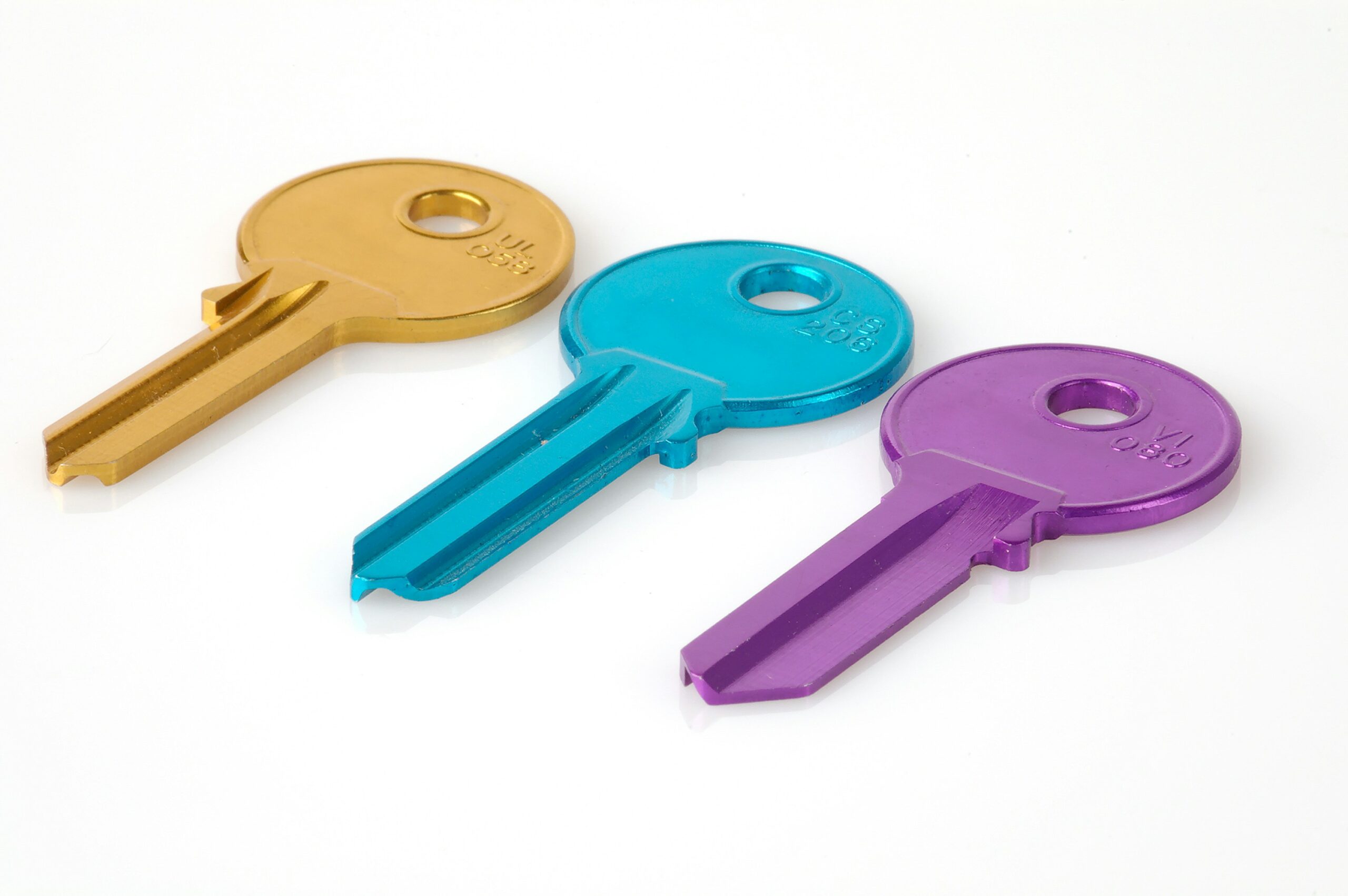Picture this: a customer emails to let you know their name is misspelled on your website. No big deal, right? You just need to log in and fix it.

Except…you can’t. Because once you sit down at your computer you realize you can’t remember your password. Surely you have it saved somewhere, but where do you start? Was it in an old email? A random notebook? An ancient sticky note that’s probably stuck to the bottom of your desk drawer?
That sinking feeling? Totally normal. It’s one of the most common (and frustrating) website struggles. And the good news is that it’s also one of the easiest ones to fix!
👩💻 Psst: There’s a freebie to help with this at the end of the post – no email required!
The 4 Website Essentials You Should Always Know
There’s a few categories of information you want to have handy, so let’s go through them one by one:

1. Website Login 🔑
Your website login page is where you go to edit your website. If you use WordPress, for example, the URL will be something like yoursite.com/wp-admin.
This may also be the same as with your website host (see #2 below) for all-in-one platforms like Squarespace, Wix, and Shopify.
Once you find the correct page, make note of the URL as well as your username and password.
Note: If you can’t figure out the correct URL, try searching for “[yoursite.com] login” in your email
2. Website Hosting Login 🏠
Your web hosting account is where website files live on the internet. Like I mentioned above, sometimes this uses the same login as your website (like Squarespace, Wix, or Shopify).
Once you figure out your host, make note of their URL as well as your username and password.
Note: If you can’t figure it out, try searching for “[yoursite.com] hosting” in your email. You likely pay them monthly or yearly so you should see a recent receipt.
3. Domain Registrar Login 📌
Your domain name is your website address (yoursite.com), and your domain registrar is the company that you bought your domain name from.
This is commonly someone like GoDaddy, Namecheap, Google Domains, etc. It’s also possible your web host (#2, above) registered your domain name on your behalf, so check with them if you can’t find any other info.
Once you find the info, be sure to note the URL as well as the username and password.
Note: Try searching for “[yoursite.com] registration” in your email. If it’s not bundled with your hosting, you likely pay this yearly or pay for multiple years at once, so check for a receipt.
4. Your Website Support Contact 👩💻
Did you work with a web designer or developer to create your website? Do you have someone you can call, text, or email if you get stuck?
If so, be sure to note down their contact info as well. It’s also possible they handle domain registration and web hosting on your behalf, so if you can’t find that info elsewhere you may want to ask them.
A few minutes of organizing now =
fewer late-night website panics later
Why Your Website Login Details Matter
Beyond making it easier to manage your website, having this information organized and available:
- ⏰ Saves you time. No more late-night scrambling or endless email searches. When something breaks, you can log in right away or reach the right person without crashing out at midnight.
- 💰 Saves you money. Getting back to work quickly means you don’t have to pay someone else just to dig up details you already have (somewhere lol). That’s money (and energy) you can put back into your actual work.
- 😎 Puts you in control. This one’s the biggie. Your website is an important business asset – and with these details ready, you’ll know you can log in (or share access) whenever it really counts.
Simple Ways to Store Website Login Details Safely
When you’re ready to organize your website details, here are a few options to make sure they stay secure but still easily accessible:
- Use a password manager
- Services like Bitwarden, 1Password or LastPass are secure and organized.
- You can label each login precisely and add notes where needed.
- Store it digitally
- You can add a password to a Google Docs, Word file or right in your Notes app.
- This is easy, free, and safer than plain text
- Print a copy
- I created a 100% free file (no email required) that you can print, fill out, and keep somewhere safe.
- Or create a document with the details, print it out, and then delete the file.
Remember: The best system is the one you’ll actually use…just try to avoid keeping these details in random emails or sticky notes.
If you do just one thing for your website this week – take the time to organize this information! You’ll save future you a ton of time, stress, and headaches.
Grab the Free Checklist

I’m so passionate about this topic that I made a one-page printable Website Details Organizer so you don’t forget a single piece of info. Totally free, no email required – this stuff is *that* important.
Note: The PDF is designed to be printed and then filled in, not saved with sensitive info digitally.

